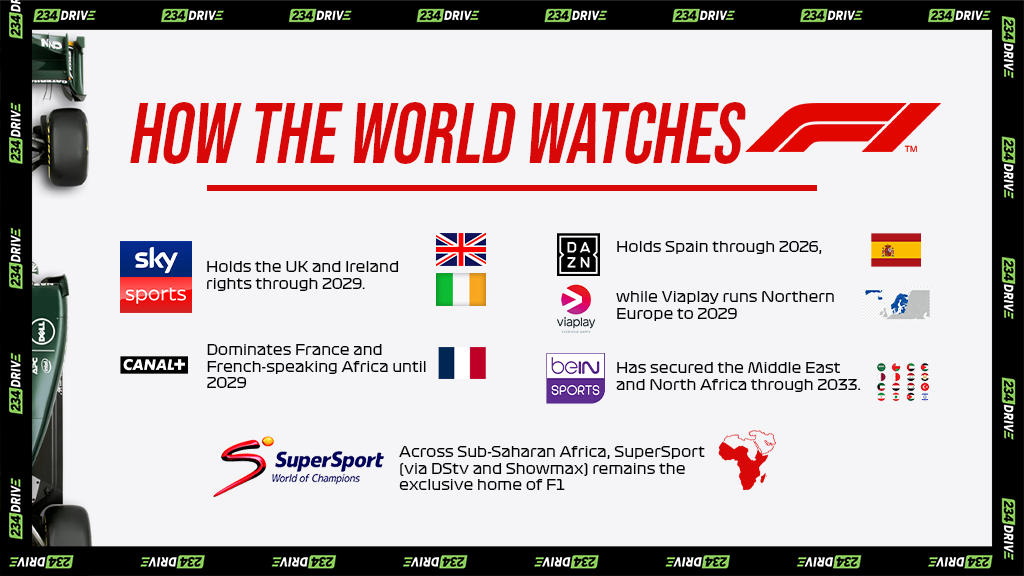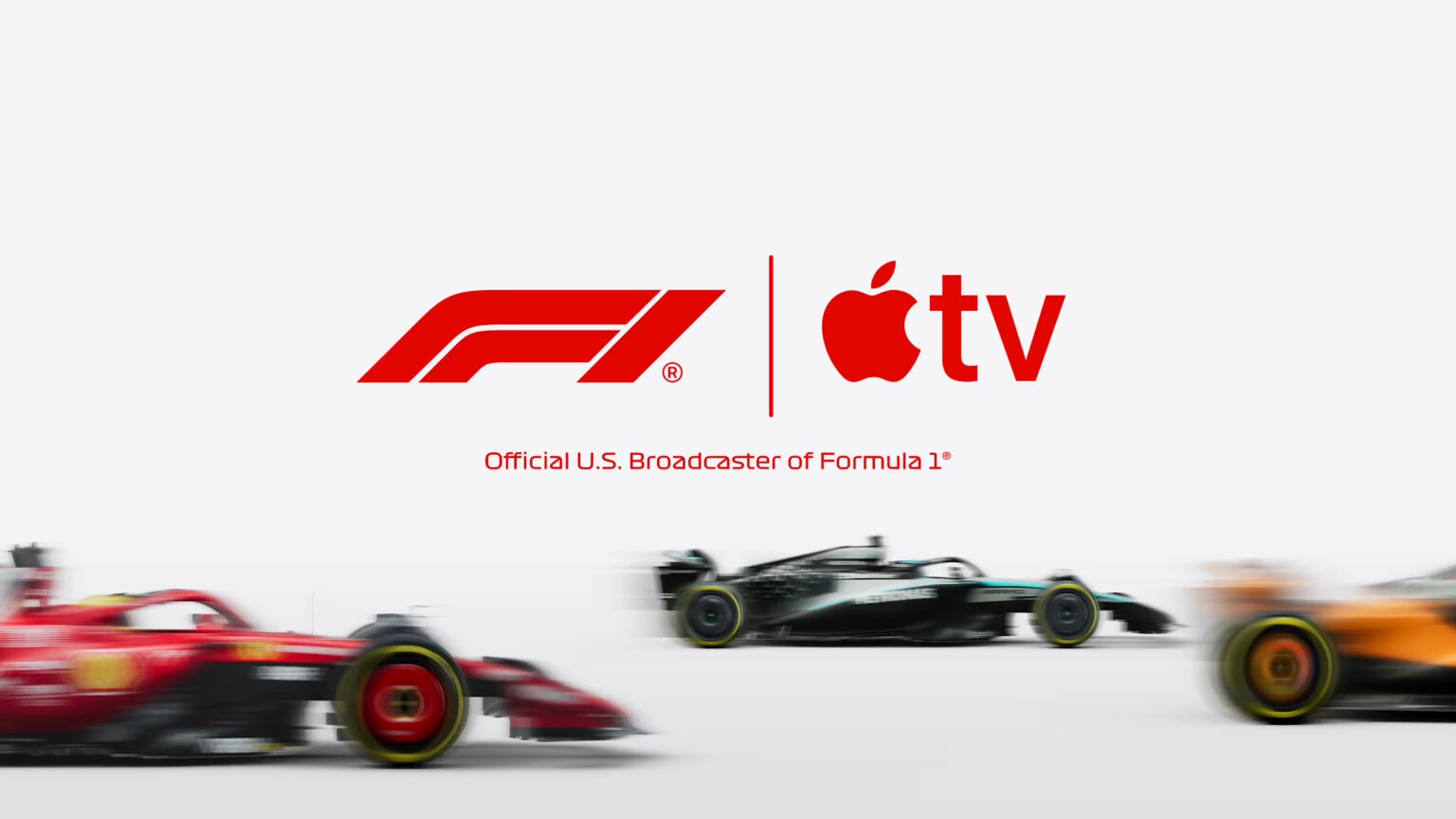When Apple announced its exclusive Formula 1 broadcasting deal for the United States, it signalled a new era where technology, sport, and storytelling converge in real time. The deal, valued at $700 million over five years, places Apple TV+ into the front row of global sports streaming and signals a new era where technology, luxury, and motion converge.
Beginning in 2026, Apple TV+ will carry every practice, qualifying, sprint, and Grand Prix exclusively in the U.S., replacing ESPN’s long-held rights. At roughly $140 million a year, Apple is paying nearly double what ESPN shelled out, The value lies less in the money and more in the power to shape how people watch, connect, and consume.
Apple’s Drive to Dominate
In Cupertino, apples Hq, sports aren’t a passion project; they’re infrastructure. Apple’s previous forays Major League Soccer, Friday Night Baseball were test laps. Formula 1, however, is a global brand with the cinematic drama Apple craves and needs.
This isn’t just about streaming races; it’s about owning the moments between them. Expect F1 updates integrated into the Apple Sports app, race highlights in Apple News, curated playlists on Apple Music, even augmented-reality overlays through Apple Vision Pro. Every Apple device becomes a pit stop in a grander ecosystem.
The timing couldn’t be better. Following Netflix’s Drive to Survive, Formula 1 has exploded in America with 52 million fans and counting, many under 25, many female. The sport that once belonged to the old world has suddenly become TikTok-cool, and Apple’s storytelling machine will now own that narrative outright.
Formula 1’s American Dream
For F1 CEO Stefano Domenicali, this deal is the culmination of a decade-long courtship with the U.S. audience. The sport added Miami, Austin, and Las Vegas to its calendar, pushing America from curiosity to cornerstone. Apple’s arrival cements that momentum with Silicon Valley precision.
To understand the scale of the shift, consider that the U.S. now sits as F1’s fastest-growing market, and this partnership places Apple at the center of it all. Imagine switching between driver cams from your iPhone, checking tyre data on your wrist, or asking Siri why Leclerc is still on mediums – Apple has built an ecosystem ready for this.
How the World Watches F1
Outside the U.S., the broadcast grid remains divided among heavyweight media houses:

These long-term deals mean Apple’s entry, for now, is U.S.-only. But the tremors will travel far beyond its borders.
The West African Angle
For Nigeria and West Africa, this announcement doesn’t change where you’ll watch F1—yet. SuperSport and Showmax remain the default, and in French-speaking markets, Canal+ reigns.
But the implications are enormous.
First, production standards will rise. Apple’s minimalist, data-rich presentation will reset expectations globally. African broadcasters, already under pressure to modernize, will need to elevate the experience—cleaner graphics, multilingual commentary, second-screen integration.
Second, the SuperSport–Canal+ merger, following Canal+’s acquisition of MultiChoice, could create a continental streaming powerhouse—precisely the kind of platform capable of negotiating global-level sports partnerships and perhaps even co-distributing content with players like Apple in the future.
Finally, the audience shift is real. Nigeria’s motorsport audience is young, digital, and aspirational. The idea of watching Formula 1 from a smartphone in Lagos or Accra is no longer fringe—it’s the new baseline. And if Apple decides to extend access through its African-facing Apple TV+ infrastructure, West Africa would be among the first to feel the effect.
Luxury, Speed, and the New Attention Economy
Apple’s move isn’t about capturing petrolheads—it’s about locking in the luxury consumer of the next decade. Formula 1 sits at the intersection of wealth, innovation, and identity. Each race is a parade of brands—Rolex, Mercedes, Ferrari, Tag Heuer, Red Bull—that double as status symbols. For Apple, that synergy is irresistible.
The company has always been more than a tech brand; it’s a curator of taste. With F1, it now owns one of the most desirable live experiences on earth. This is less about broadcasting and more about building a global lifestyle loop, where owning an iPhone, wearing an Apple Watch, and streaming Formula 1 become one continuous statement of belonging.
What Comes Next
For fans, this marks the end of passive viewing. The next era of sports broadcasting will be interactive, personalized, and algorithmic. The line between screen and experience will blur.
For Formula 1, the Apple partnership is both a windfall and a challenge: the money is historic, but the expectations are, too. Apple will demand nothing less than cinematic perfection—every camera angle, every pixel of telemetry, every heartbeat of drama.
And for the rest of the world—from London to Lagos—the message is clear: the future of sport is no longer owned by television. It’s coded, streamed, and powered by silicon.
The Finish Line
This $700 million lap isn’t just another rights deal. It’s a design statement, a business strategy, and a cultural pivot.
Formula 1 gives Apple access to emotion at the fastest speed. Apple gives F1 access to an ecosystem that turns viewers into participants. Everyone else—ESPN, Sky, Canal+, SuperSport—is now racing to keep up.
The world’s most elite sport just found its most premium stage. And once again, Apple is at the center of this experience .










